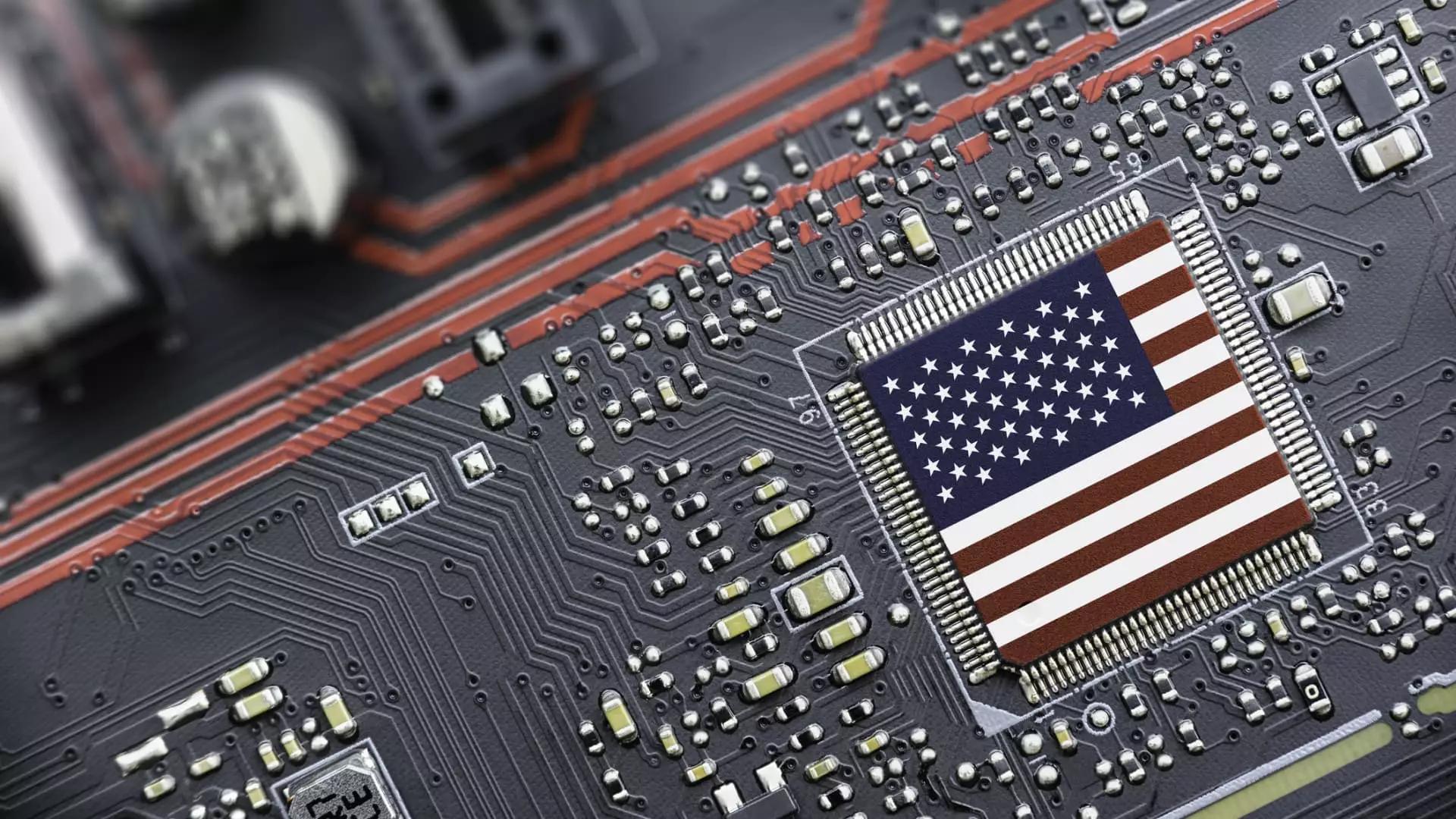5 Alarming Reasons for the Chip Market’s Troubling Decline

The semiconductor sector is facing a storm, and the recent market reactions underscore the alarming sentiment gripping investors. On the surface, President Trump’s announcement of tariff exemptions for semiconductors seems like a blessing, aimed at preventing further financial burdens on this critical industry. Yet, investors are seemingly unfazed by the news, and their tepid response raises troubling questions about the underlying economic landscape. The optimism has quickly faded, demonstrating a profound mistrust towards any perceived government alleviation.
With the backdrop of fluctuating stock prices, we saw companies like Nvidia lose nearly 7% of its value in a single day. Micron literally fell off a cliff, declining 14% in the same timeframe. These figures pertain to companies that are not just major players; they are foundational pillars of the tech ecosystem. The erosion of stock prices, especially for a high-flyer like Nvidia, sends ripples of unease through the entire industry. Investors are not naïve—they recognize that this optimism is merely superficial and that an avalanche of complications lies just beneath the surface.
Demand Destruction is Looming
One of the most alarming realizations is the potential for demand collapse within the semiconductor market. Current tariffs don’t just target chips; they affect the entire supply chain. New potential tariffs of nearly 40% on imported computing equipment and wireless devices could cripple consumer electronics purchasing, thereby impacting sales for chip manufacturers directly or indirectly. The repercussions extend far beyond pricing structures. As essential as semiconductors are to modern technology, there exists a dangerous threat: the possibility that consumers simply won’t buy new devices, as inflated prices push them away.
The numbers paint a daunting picture; Bernstein’s Stacy Rasgon suggests that approximately $200 billion worth of computing equipment could face a consumption disaster if these tariffs are realized. If consumers instinctively hold back from making purchases, the implications for companies like TSMC and Nvidia are dire. Any gain from tariff exemptions may be for naught if the economic landscape shifts unfavorably for consumer spending.
Geopolitical Tensions Complicate Matters
Compounding these challenges are the geopolitical tensions that have become a critical norm in recent years. For Nvidia, the stakes are doubled. Not only does it have to navigate the precarious American market landscape, but the company is also entangled in international relations with China. Reports have surfaced that Chinese tech giants, namely Alibaba, are stockpiling Nvidia’s H20 AI chips in anticipation of impending restrictions. This presents a paradox for Nvidia: how does one balance the demand from a country that is both a vital customer and a potential adversary?
When companies find themselves in such a landscape characterized by government-induced uncertainty, the opportunity to innovate and grow is undermined. The adverse effects could resonate across the entire tech industry, stifling advancement and potentially leading to a significant loss of competitive edge.
The Haven of Domestic Manufacturing: A Double-Edged Sword
While the narrative around reshoring manufacturing to American soil has been touted as a potential remedy for the semiconductor sector, we must interrogate whether this is genuinely beneficial in the short term. Some may argue that American manufacturers such as Intel could ultimately find their footing as production returns home. However, in the present climate, expectations must be tempered with realism.
Indeed, while the notion of ‘America First’ resonates well as a sentiment, the immediate fallout from weakened consumer demand and potential trade restrictions will overshadow any long-term benefits that might surface from fostering local manufacturing capabilities. As it stands, the industry’s trajectory may pivot towards stagnation rather than growth unless consumer confidence is robustly restored and tariffs lifted.
Infrastructure Cuts: The Final Straw?
To exacerbate an already somber scenario, reports indicate substantial delays in infrastructure projects by tech giants like Microsoft across various regions. Such decisions have immediate ramifications not just for those companies but ripple outward impacts, questioning the foundational demand for AI services once thought bulletproof.
These developments cast doubt on the purported growth opportunities for the tech sector, exposing vulnerabilities that could dismantle investor confidence even further. When essential projects are postponed or paused, the outlook is ominous—a rift exists between ambitious technological advancement and the realities dictated by economic constraints.
In this chaotic environment, one thing remains clear: the semiconductor crisis goes far beyond just stock figures. It’s emblematic of a fraught intersection of government policy, global demand, and industry resilience.





